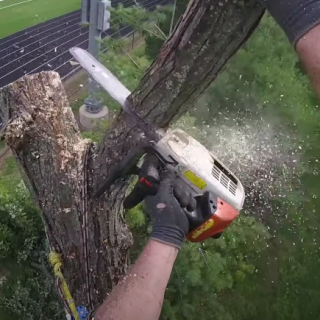When That Old Tree Needs Removal
When a tree develops grievances, well past the point of return, it’s hard to face the problem head on— especially if you don’t even know it in the first place!
If you don’t know where to look, it’s possible you won’t even have the slightest idea your tree is diseased until it’s too late! And if it’s too late, there’s a big chance your tree could fall down and endanger its surroundings.
And that’s a big no-no, especially if the tree is particularly close to any edifice or electricity poles— and ignoring it could lead to even bigger problems. While it’s still in the early stages, call your local tree service for professional tree care (who knows, maybe you just need tree pruning, or less drastic measures).
Either way, tree removal is the best way of preventing any mishaps that could happen in the future, but the question is, how do you know you need it?
We’ve got your back! We’ll give you a rundown on the red flags that might mean your tree needs removal. Stat.
Hollow Trunks
Sure, trunks can be hollow, no problemo. But only for a few years. Any more than that (or maybe even less!), the whole structure would be very, very compromised. If ⅓ of the roof is hollow, it’d be in your best interests to remove it. Of course it all depends on your tree, which you know most. Still, a professional opinion from a certified arborist is best.
Dead Branches
If the tree is 50 percent or more (or less) damaged, it’s probably best to get tree removal. Crossed and overgrown branches (especially if it’s nearing closer to your home) should be pruned regularly. And if not, tree service therefore is very necessary before it could get any worse (i.e. breakage).
Damaged Trunk
Deep wounds on the trunk is a cause for concern. Whatever it manifests to be— cracks, wounds, fissures, it all boils down to one thing. Internal decay. The wounds could potentially heal, and sustain no damage— but you can’t be sure, so asking an arborist when doing your regular tree service should be in order.
Fungal Growth
When you see sprouts growing from the base of the tree, it’s not a normal thing a tree does. Maybe it could be an injury from a construction job. Meanwhile, if there are fungus popping up near your roots, like for example mushrooms (but not all mushrooms indicate fungal infections!), it usually pertains to internal rot as well.
Leaning Trees
Trees leaning over the side should need tree removal, ASAP. The loss in balance contributes to it potentially tumbling down without any reason, posing a threat to nearby people and structures.
Heaving Soil
If the soil near the base of the root is blowing up, curving or swelling, it’s a clear sign of needing tree care. And probably the most confirmation you could ever need. And it’s pretty easy to spot too, in case the other symptoms are just a tad bit ambiguous.



